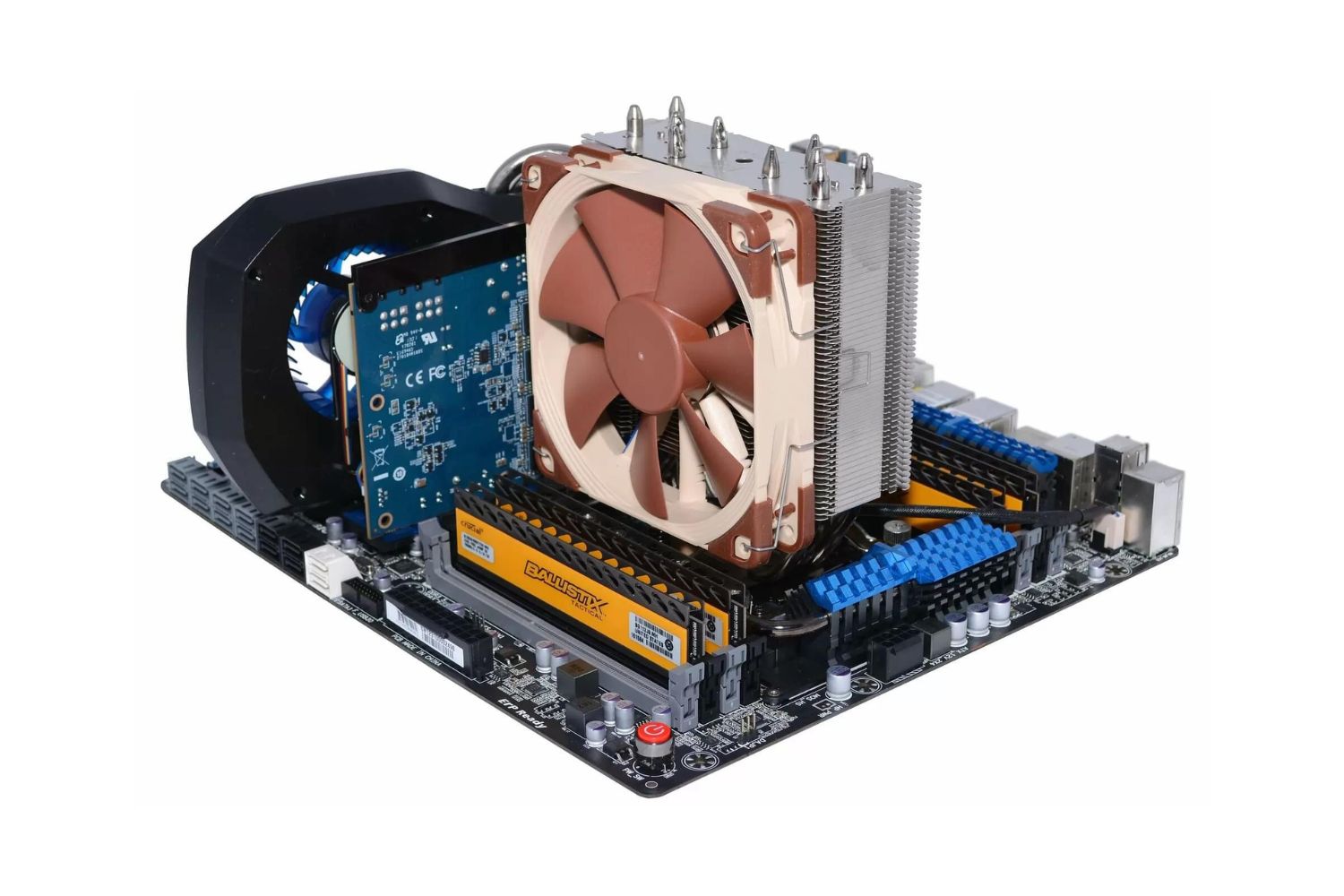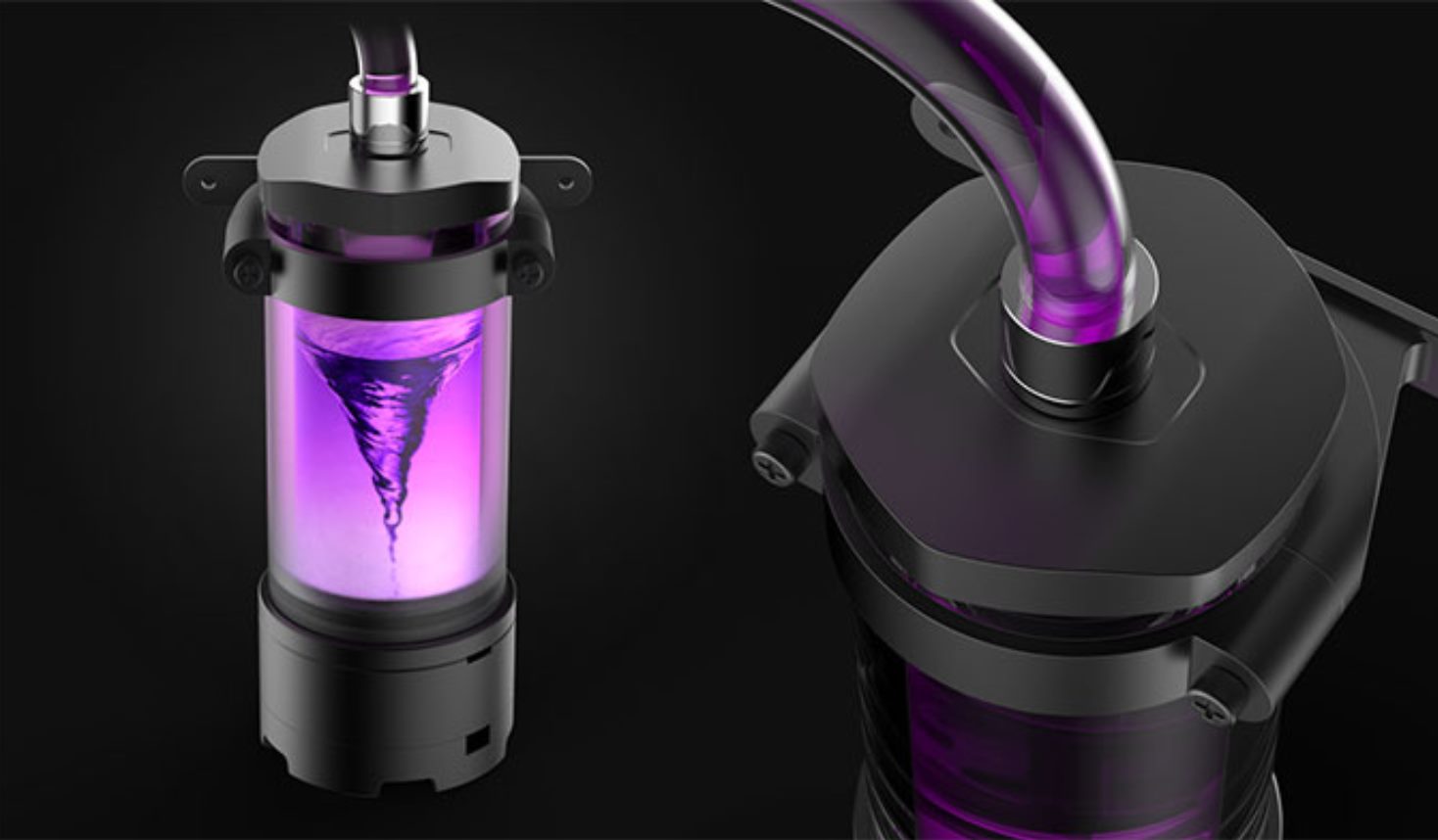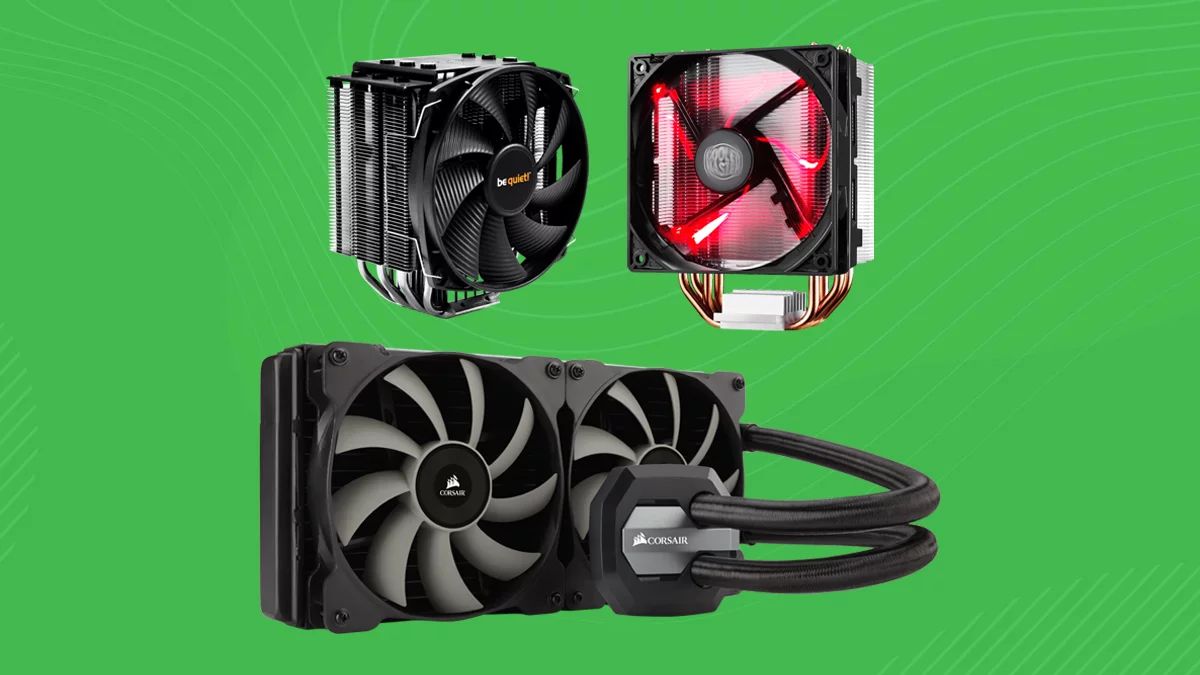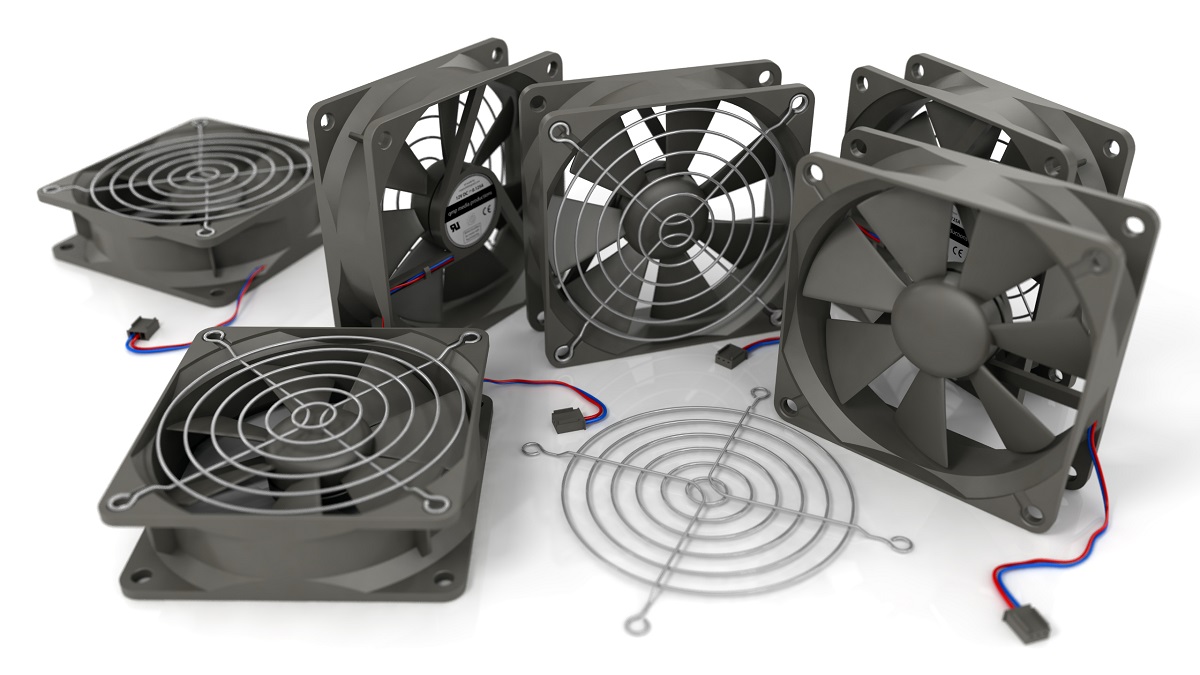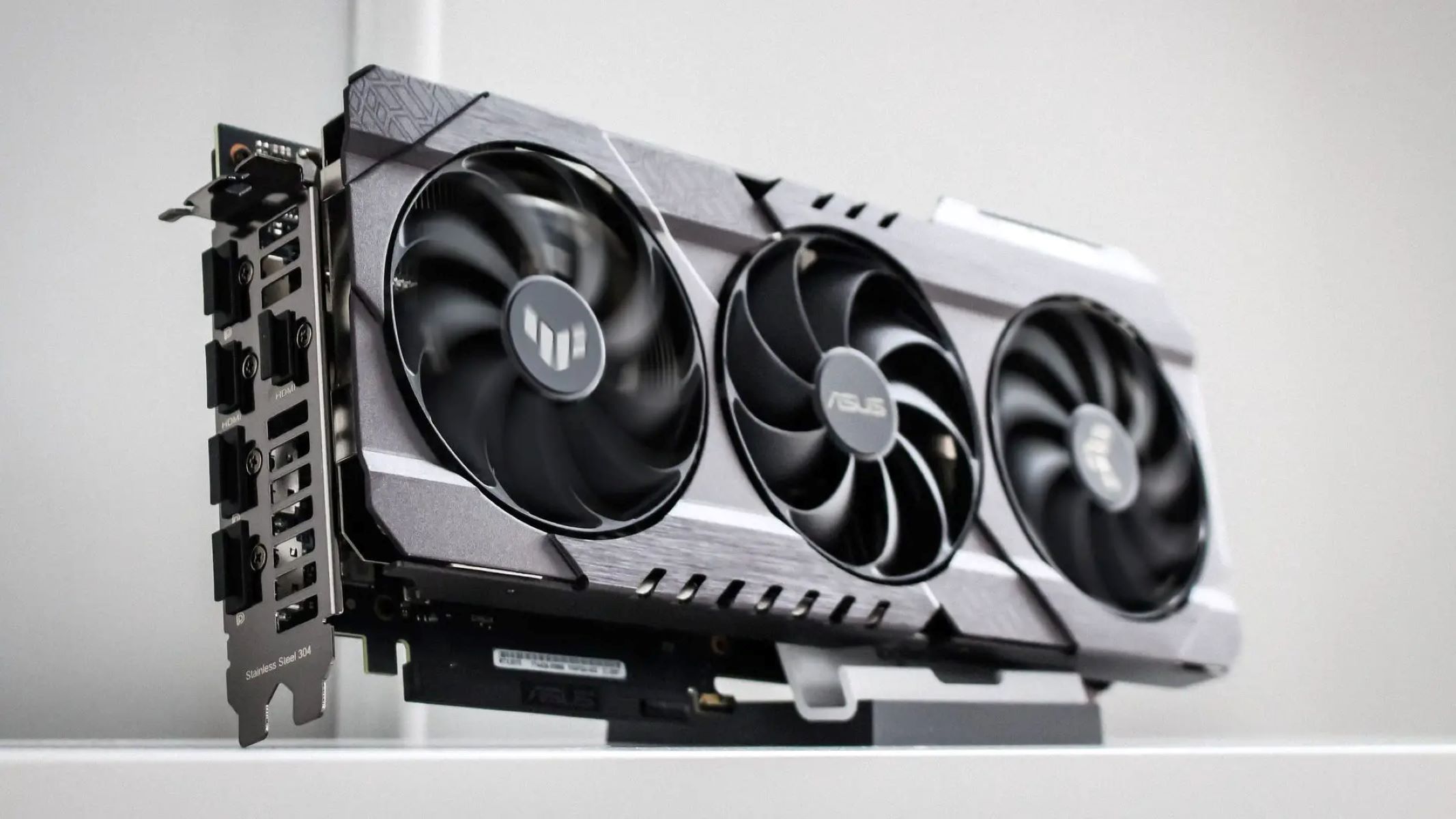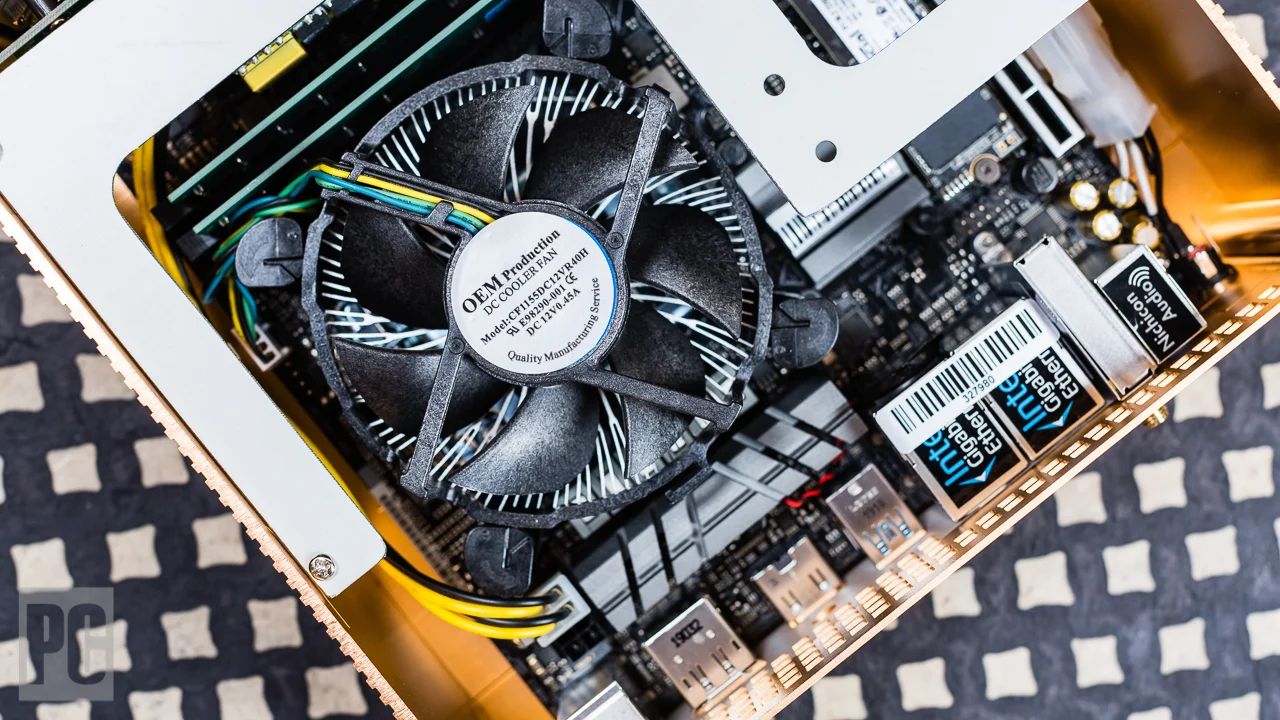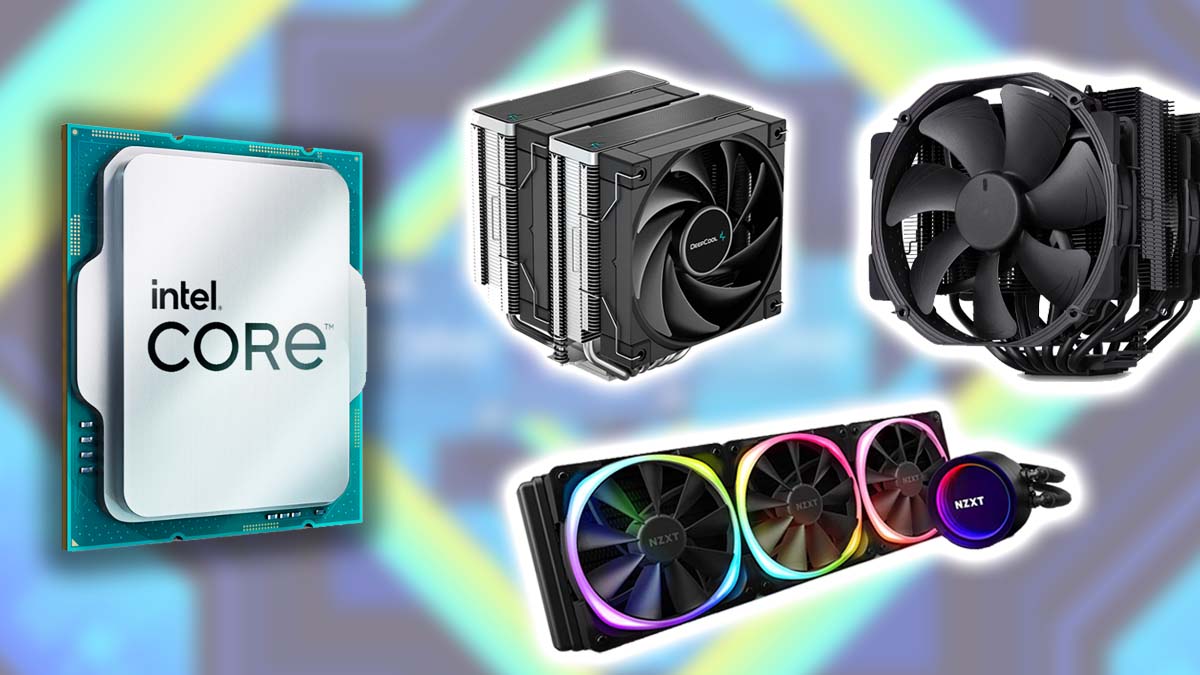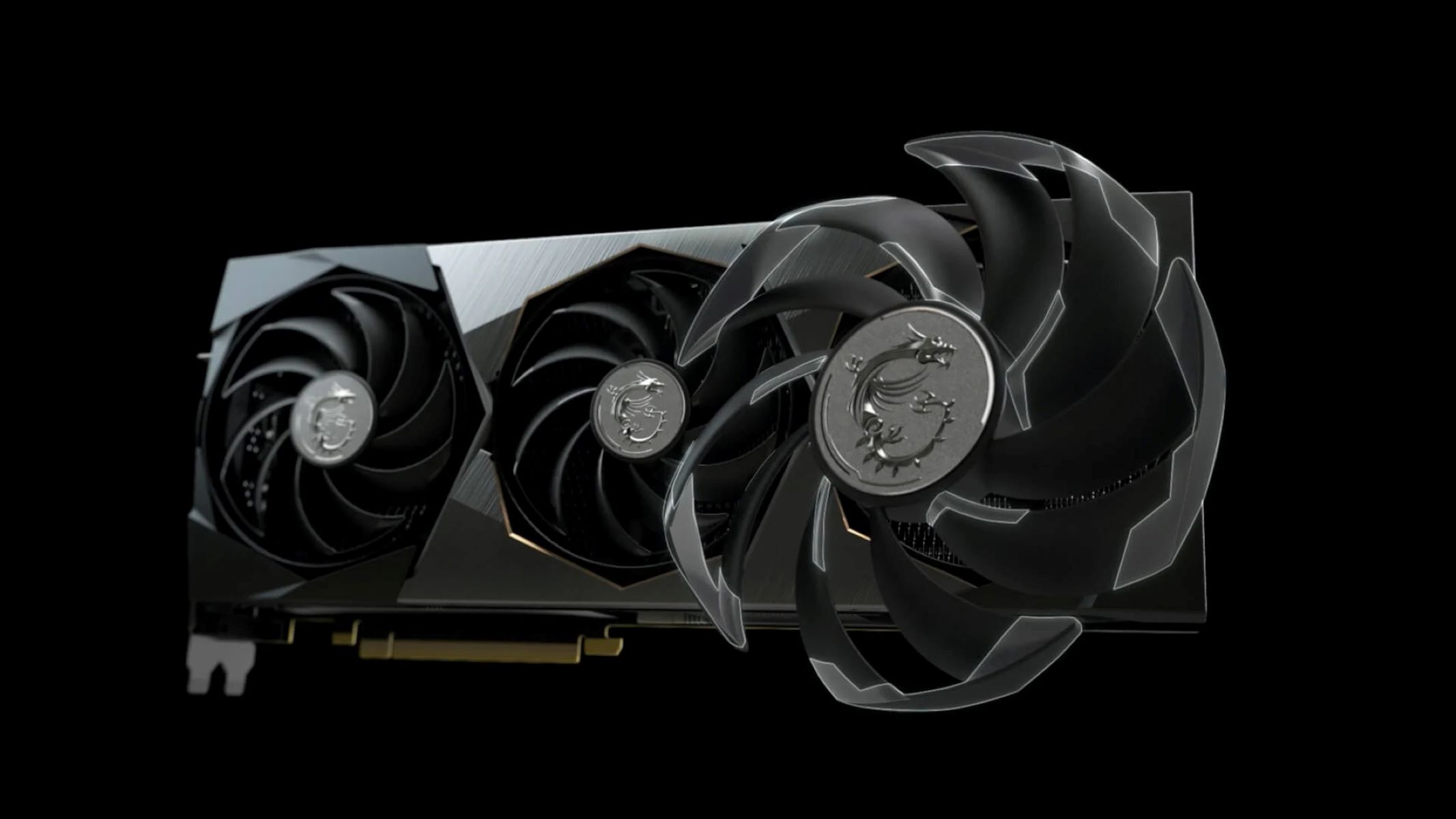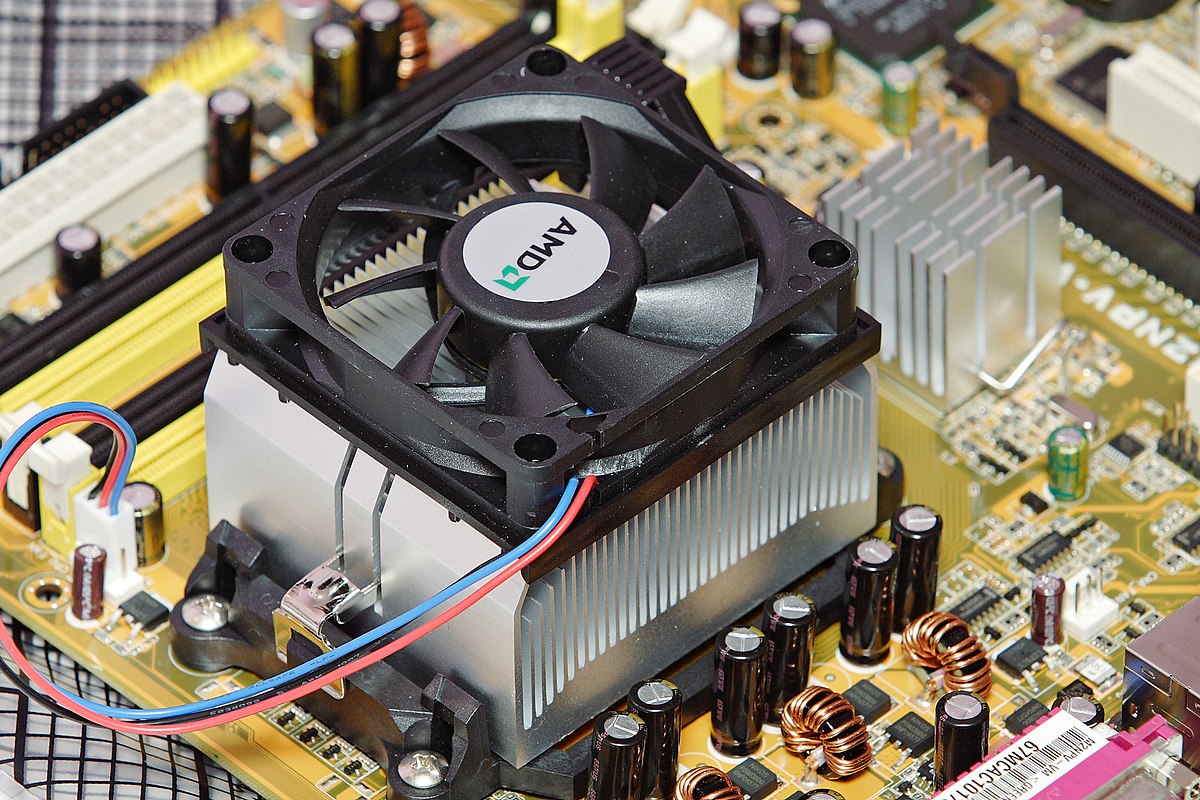Introduction
CPU cooling is an essential aspect of maintaining the performance and longevity of a computer’s central processing unit (CPU). The CPU generates a significant amount of heat during operation, and without proper cooling, it can overheat and lead to a decrease in performance or even permanent damage. This is where a CPU cooler comes into play.
A CPU cooler, as the name suggests, is a device designed to regulate the temperature of the CPU by dissipating the heat it generates. There are various types of CPU coolers available on the market, one of which is the 12V CPU cooler. In this article, we will explore how a 12V CPU cooler works and its importance in maintaining optimal CPU performance.
Before delving into the details, it is essential to understand why a CPU cooler is necessary. The CPU is the brain of a computer, responsible for executing instructions and performing calculations. As it carries out these operations, it generates heat as a byproduct. Without a cooling mechanism, the temperature can rise rapidly, leading to thermal throttling, instability, and even permanent damage to the CPU.
A 12V CPU cooler consists of two primary components: the fan and the heat sink. The fan is responsible for creating airflow, while the heat sink is in direct contact with the CPU and dissipates the heat. Now let’s explore how these components work together to keep the CPU at an optimal temperature.
What is a CPU cooler?
A CPU cooler is a device designed to regulate and control the temperature of the central processing unit (CPU) of a computer. As the CPU performs intensive tasks, it generates heat as a byproduct. A CPU cooler is crucial in dissipating this heat and preventing the CPU from overheating.
The CPU cooler works by absorbing the heat emitted by the CPU and transferring it away from the processor. It consists of two main components: the fan and the heat sink. The fan is responsible for creating airflow, while the heat sink makes direct contact with the CPU and facilitates heat dissipation.
There are various types of CPU coolers available, including air coolers, liquid coolers, and 12V CPU coolers. The 12V CPU cooler, in particular, operates using a 12-volt power supply and is known for its efficient cooling performance.
One of the key functions of a CPU cooler is to maintain the CPU’s temperature within safe operating limits. A high-performance CPU can generate a significant amount of heat, and without adequate cooling, the temperature can quickly rise to dangerous levels. This can lead to thermal throttling, where the CPU slows down to prevent overheating, causing a decrease in performance.
Additionally, a CPU cooler helps to prolong the lifespan of the CPU. Excessive heat can degrade the components of the CPU over time, potentially leading to premature failure. By keeping the CPU temperature in check, a CPU cooler helps to ensure the longevity and reliability of the processor.
Overall, a CPU cooler is an essential component in any computer system, especially for those that undergo heavy computing tasks, such as gaming or video editing. It plays a vital role in maintaining the CPU’s performance, stability, and longevity by effectively dissipating the heat generated during operation.
Why is a CPU cooler necessary?
A CPU cooler is a crucial component of a computer system that plays a vital role in maintaining the performance, stability, and longevity of the central processing unit (CPU). There are several reasons why a CPU cooler is necessary:
1. Heat Regulation: The CPU generates a significant amount of heat during operation. Without proper cooling, the temperature of the CPU can quickly rise to dangerous levels, jeopardizing its performance and causing potential damage. A CPU cooler helps regulate the temperature by dissipating the heat, ensuring optimal functioning of the CPU.
2. Thermal Throttling Prevention: When a CPU operates at high temperatures, it may activate a mechanism called thermal throttling. This mechanism reduces the CPU’s performance to lower the temperature and prevent overheating. However, thermal throttling significantly impacts the CPU’s processing power, leading to reduced performance in tasks that require high computational capabilities. A CPU cooler helps prevent thermal throttling by keeping the CPU temperature within safe limits.
3. Increased Lifespan: Excessive heat can accelerate the deterioration of a CPU’s components over time. A CPU cooler helps maintain a stable and lower temperature, prolonging the lifespan of the CPU and reducing the risk of premature failure. This is particularly important for individuals who use their computers for resource-intensive tasks or those who want to extend the longevity of their computer system.
4. System Stability: When a CPU operates at high temperatures, it can lead to system instability, causing crashes, freezes, and unexpected shutdowns. This can disrupt work processes, gaming experiences, or any other computer activities. By effectively cooling the CPU, a CPU cooler helps maintain system stability, ensuring smooth and uninterrupted operation.
5. Overclocking Potential: Overclocking is a popular practice among computer enthusiasts to push the limits of their CPUs for increased performance. However, overclocking generates more heat, requiring efficient cooling to prevent damage. A CPU cooler is necessary for managing the increased heat output during overclocking, allowing users to maximize the potential of their CPUs without compromising stability.
Overall, a CPU cooler is not just a luxury but a necessity for any computer system. It regulates temperature, prevents thermal throttling, extends the lifespan of the CPU, maintains system stability, and facilitates safe overclocking. Whether it’s for casual computer use, professional work, or gaming, a CPU cooler is essential for ensuring optimal performance and protecting the longevity of the CPU.
Components of a 12V CPU cooler
A 12V CPU cooler is composed of several essential components that work together to regulate the temperature of the central processing unit (CPU). Understanding these components can provide insight into the inner workings of a 12V CPU cooler. Here are the key components:
1. Fan: The fan is a vital component of a 12V CPU cooler. It is responsible for creating airflow to facilitate heat transfer. The fan draws cool air from the surroundings and directs it towards the heat sink, where it absorbs the heat generated by the CPU. The movement of air created by the fan helps to dissipate the heat effectively, keeping the CPU temperature within safe limits.
2. Heat Sink: The heat sink is another crucial component of a 12V CPU cooler. It is typically made of metal, such as aluminum or copper, and is designed to absorb and dissipate the heat generated by the CPU. The heat sink is directly in contact with the CPU, allowing for efficient heat transfer from the processor to the surrounding air. The size and design of the heat sink, including its fins or heat pipes, contribute to its cooling performance.
3. Thermal Interface Material (TIM): The TIM is a substance applied between the CPU and the heat sink to improve thermal conductivity and fill in any gaps or air pockets. It ensures optimal contact between the CPU and the heat sink, facilitating the transfer of heat. Common materials used as TIM include thermal paste or thermal pad.
4. Mounting Mechanism: The mounting mechanism is responsible for securely attaching the CPU cooler to the CPU socket on the motherboard. It ensures proper alignment and contact between the CPU and the heat sink. The mounting mechanism may vary depending on the specific CPU socket type, such as Intel’s LGA or AMD’s AM4, and can involve brackets, screws, or other fastening mechanisms.
5. Heat Pipes (Optional): Some higher-end 12V CPU coolers may incorporate heat pipes into their design. Heat pipes are hollow pipes filled with a heat-conductive fluid, such as copper or aluminum, that transfer heat from one end to the other efficiently. They enhance the heat transfer performance of the CPU cooler by increasing the surface area available for heat dissipation.
These components work in conjunction to maintain the optimal temperature of the CPU. The fan generates airflow that passes through the heat sink, absorbing and dissipating the heat generated by the CPU. The thermal interface material ensures effective heat transfer, while the mounting mechanism securely holds the CPU cooler in place. Optional heat pipes further enhance the cooling performance of the CPU cooler.
Understanding the components of a 12V CPU cooler can help users choose the right cooler for their system and ensure efficient cooling of the CPU, maximizing performance and maintaining system stability.
Fan
The fan is one of the crucial components of a 12V CPU cooler, playing a vital role in the cooling process. Its primary function is to create airflow, which helps dissipate the heat generated by the central processing unit (CPU). Here is a closer look at the fan and its importance in a 12V CPU cooler:
1. Airflow Creation: The fan in a 12V CPU cooler is responsible for generating airflow. It draws ambient air into the cooler and directs it towards the heat sink. The movement of air carries away the heat from the CPU, aiding in its dissipation. The fan’s rotation generates a flow of air that ensures the constant exchange of heat, keeping the CPU temperature at optimal levels.
2. Blade Design: The fan blades are designed to maximize the airflow. They come in various shapes and configurations, such as curved, straight, or angled, depending on the specific design of the fan. The blade design influences the fan’s performance, including air pressure, noise level, and overall cooling efficiency.
3. Fan Size: The size of the fan plays a significant role in its cooling capability. Larger fans generally move a higher volume of air compared to smaller ones, resulting in improved cooling performance. However, the size of the fan is limited by the available space in the computer case and the compatibility with the CPU cooler mounting mechanism.
4. Speed Control: Most 12V CPU cooler fans come with speed control options. This allows users to adjust the fan’s rotational speed and regulate the airflow according to their cooling requirements. Speed control can be achieved through the motherboard’s fan headers or dedicated software. It provides flexibility in balancing cooling performance and noise levels, depending on the user’s preferences.
5. Noise Level: The fan’s noise level, measured in decibels (dB), is an important consideration for many users. While fans provide essential cooling, they can also generate noise due to air turbulence and motor operation. Many manufacturers focus on developing quieter fan designs, utilizing technologies like improved blade shapes, rubber dampeners, and fluid dynamic bearings to reduce noise output.
6. Fan Placement: The placement of the fan within the CPU cooler can vary. Some coolers feature a single fan positioned directly above the heat sink, while others employ dual fans in a push-pull configuration. The push-pull setup promotes better airflow by drawing cool air in and pushing hot air out, further enhancing the cooling performance of the CPU cooler.
7. Power Supply: The 12V CPU cooler fan requires a 12-volt power supply to operate effectively. It typically connects to the motherboard’s fan headers using a fan cable, which delivers power and allows for fan speed control. The 12V power supply ensures that the fan is capable of providing adequate cooling power for the CPU.
The fan is a critical component of a 12V CPU cooler, contributing significantly to the cooling efficiency and overall temperature regulation of the CPU. Its ability to create airflow and dissipate heat is essential for maintaining the CPU’s performance, stability, and longevity.
Heat Sink
The heat sink is a vital component of a 12V CPU cooler, working in conjunction with the fan to regulate the temperature of the central processing unit (CPU). Its primary function is to absorb the heat generated by the CPU and facilitate its dissipation. Here is a closer look at the heat sink and its importance in a 12V CPU cooler:
1. Heat Absorption: The heat sink, usually made of metal such as aluminum or copper, is in direct contact with the CPU. It serves as a heat absorber, efficiently transferring the heat from the CPU to its surface. The larger surface area of the heat sink allows for better heat absorption, ensuring that the CPU temperature remains within safe limits.
2. Heat Dissipation: Once the heat is absorbed by the heat sink, it needs to be dissipated into the surrounding environment. The design of the heat sink is crucial in facilitating this process. It typically consists of fins or ridges that increase the surface area available for heat dissipation. The larger the surface area, the more heat can be effectively dispersed into the surrounding air.
3. Material Properties: The choice of material for the heat sink has a significant impact on its performance. Aluminum is a common material used due to its lightweight nature and good thermal conductivity. Copper, on the other hand, has even better thermal conductivity but is more expensive. Some high-end CPU coolers may use a combination of both materials for optimal cooling performance.
4. Fin Design: Heat sinks often feature fin-like structures that protrude from their surface. These fins increase the effective surface area of the heat sink, allowing for better heat dissipation. Different fin designs, such as straight, curved, or pin-shaped, offer varying levels of cooling performance. The fin density also affects the cooling performance, with higher fin density providing more effective heat dissipation.
5. Heat Pipes (Optional): Some 12V CPU coolers incorporate heat pipes into their heat sink design. Heat pipes are hollow tubes filled with a heat-conductive fluid, such as copper or aluminum, that enables efficient heat transfer. These pipes help distribute the heat from the CPU to different parts of the heat sink, maximizing the cooling efficiency of the CPU cooler.
6. Thermal Interface Material (TIM): The heat sink is in direct contact with the CPU, and a thermal interface material (TIM) is used to enhance thermal conductivity and eliminate any air gaps between the two surfaces. Common TIM materials include thermal paste or thermal pads, which help improve the heat transfer from the CPU to the heat sink.
7. Mounting Mechanism: The heat sink is securely attached to the CPU using a mounting mechanism, ensuring proper alignment and contact between the two components. This mechanism may involve brackets, screws, or other fastening mechanisms depending on the specific CPU socket type. A secure mounting ensures optimal heat transfer and cooling efficiency.
The heat sink is a crucial component of a 12V CPU cooler, working hand in hand with the fan to effectively dissipate the heat generated by the CPU. Its ability to absorb and dissipate heat ensures the optimal temperature regulation of the CPU, contributing to its performance, stability, and longevity.
How does a 12V CPU cooler work?
A 12V CPU cooler operates using a 12-volt power supply and functions by utilizing a combination of key processes to regulate the temperature of the central processing unit (CPU). Understanding how a 12V CPU cooler works can provide insight into its effectiveness in cooling the CPU and preventing overheating. Here are the main processes involved:
1. Heat Absorption: The 12V CPU cooler begins its operation by absorbing the heat generated by the CPU. The heat sink, in direct contact with the CPU, acts as a heat absorber. The heat is transferred from the CPU to the heat sink, where it is concentrated and ready for dissipation.
2. Heat Dissipation: Once the heat is absorbed by the heat sink, the next step is to dissipate it. The fan, a crucial component of the 12V CPU cooler, comes into play. The fan creates airflow, with its blades rapidly spinning and drawing cool air from the surroundings. This airflow passes through the heat sink, effectively transferring the heat from the heat sink to the air surrounding it.
3. Continuous Airflow: The continuous airflow generated by the fan ensures that the heat is constantly being carried away from the heat sink. As the hot air is expelled from the CPU cooler, fresh cool air is drawn in, maintaining a continuous exchange of heat. This airflow process prevents the heat from building up around the CPU, helping to regulate its temperature.
The combined efforts of heat absorption, heat dissipation, and continuous airflow allow the 12V CPU cooler to effectively regulate and maintain the temperature of the CPU. By removing the excess heat generated by the CPU, the cooler prevents overheating, which can lead to performance degradation, instability, and even permanent damage to the CPU.
It is important to note that a 12V CPU cooler’s effectiveness can vary based on factors such as its design, fan speed, heat sink size, and the specific cooling requirements of the CPU. Optimizing these factors ensures that the cooler operates at its best, providing efficient cooling and ensuring the CPU’s optimal performance and longevity.
Heat absorption
One of the key processes involved in the operation of a 12V CPU cooler is heat absorption. This process is essential for removing the heat generated by the central processing unit (CPU) and transferring it to the cooling components of the CPU cooler. Here’s a closer look at how heat absorption works in a 12V CPU cooler:
When the CPU is under operation, it generates heat as a byproduct of its electrical processes. This heat can quickly accumulate and cause the CPU to overheat if left unchecked. The heat absorption process in a 12V CPU cooler begins with the heat sink, which is in direct contact with the CPU.
The heat sink is designed to efficiently absorb and transfer heat away from the CPU. Typically made of materials with high thermal conductivity, such as aluminum or copper, the heat sink acts as a heat absorber. As the CPU generates heat, it conducts it through to the heat sink’s surface through direct contact.
Once the heat is transferred to the heat sink, it begins to spread across its surface area. The larger the surface area of the heat sink, the more heat it can absorb and dissipate. This is often achieved through the use of fins or ridges on the heat sink, increasing the available surface area for heat absorption.
Thermal interface material (TIM) is also utilized between the CPU and heat sink to enhance the heat transfer process. TIM helps eliminate any gaps or air pockets between the two surfaces, improving thermal conductivity and ensuring maximum contact for efficient heat absorption.
As the heat is absorbed by the heat sink, it starts to concentrate within the metal structure. This concentration of heat prepares it for the subsequent heat dissipation process, where it will be effectively removed from the CPU cooler.
Overall, the heat absorption process in a 12V CPU cooler is a vital step in maintaining a stable and optimal temperature for the CPU. By efficiently transferring the heat away from the CPU, the heat absorption process prevents overheating, ensuring the CPU’s performance, stability, and longevity.
Heat dissipation
Heat dissipation is a critical process in the operation of a 12V CPU cooler. After the heat has been absorbed by the heat sink, the next step is to effectively dissipate it out of the system. Heat dissipation ensures that the central processing unit (CPU) remains within safe operating temperatures and prevents overheating. Here’s a closer look at how heat dissipation works in a 12V CPU cooler:
Once the heat is transferred and concentrated in the heat sink, the cooling process begins with the help of the fan. The fan, a key component of the 12V CPU cooler, generates airflow that passes through the heat sink. The fan’s rotation creates a flow of air that aids in the dissipation of heat.
The hot air from the heat sink is pushed out by the fan and expelled into the surrounding environment. At the same time, the fan draws in cooler air from the surroundings. This continuous airflow ensures that the heat from the CPU is constantly being carried away from the heat sink, preventing its buildup and maintaining a stable temperature.
The design of the heat sink plays a crucial role in facilitating heat dissipation. Heat sinks are often equipped with fins or ridges that increase the surface area available for heat transfer. The increased surface area allows for better heat dissipation into the surrounding air. The design and density of these fins influence the cooling efficiency of the CPU cooler.
The effectiveness of heat dissipation can also depend on the airflow generated by the fan. The speed, size, and blade design of the fan influence its ability to move air efficiently. Higher fan speeds or larger fans tend to generate more airflow, enhancing heat dissipation. The fan’s blade design is optimized to facilitate better airflow and minimize air turbulence, thereby improving cooling performance.
In addition to the fan and heat sink design, other factors such as the ambient temperature and the overall ventilation in the computer system can impact heat dissipation. Proper airflow management within the case, the presence of additional case fans, and maintaining clean air vents can all contribute to more effective heat dissipation.
By efficiently dissipating heat, a 12V CPU cooler ensures that the CPU operates at safe temperatures, preventing overheating and maintaining optimal performance. The combination of heat absorption and heat dissipation processes in a 12V CPU cooler allows for effective temperature regulation and helps extend the lifespan of the CPU.
Continuous airflow
Continuous airflow is a crucial aspect of the cooling process in a 12V CPU cooler. It plays a significant role in maintaining optimal temperatures, preventing overheating, and ensuring the overall efficiency of the central processing unit (CPU). Let’s take a closer look at how continuous airflow works in a 12V CPU cooler:
Once the heat generated by the CPU has been absorbed by the heat sink and transferred to the surrounding fins or ridges, continuous airflow is necessary to carry away the heat and regulate the CPU’s temperature. The fan, a key component of the 12V CPU cooler, is responsible for creating this airflow.
The fan is generally positioned in such a way that it blows air directly onto the heat sink. As the fan spins, it generates airflow that moves across the fins or ridges of the heat sink. This airflow helps in the dissipation of the accumulated heat.
Continuous airflow is vital for two main reasons:
1. Heat Exchange: The continuous airflow created by the fan facilitates the exchange of heat between the heat sink and the surrounding air. As the hot air passes through the heat sink, it transfers its heat energy to the cooler air. Consequently, the heat is carried away from the heat sink, effectively regulating the temperature of the CPU.
2. Fresh Air Intake: Continuous airflow also ensures a constant supply of fresh air to cool down the heat sink. As the fan draws in cooler air from the surroundings, it replaces the hot air that has been expelled. This continuous intake of fresh air ensures that the cooling process remains efficient and effective.
To enhance continuous airflow, the design of the heat sink often incorporates fins or ridges. These structures increase the surface area available for heat dissipation and facilitate better airflow. The spacing between the fins or ridges also allows for smooth and unrestricted airflow, preventing air turbulence and facilitating efficient cooling.
In addition to the heat sink design, factors such as the fan’s speed and size, as well as the overall ventilation in the computer case, can impact the continuity of airflow. Optimal fan speed and airflow management within the case help maintain a constant supply of fresh, cool air and ensure that the hot air is efficiently expelled.
By ensuring continuous airflow, a 12V CPU cooler keeps the CPU temperature within safe limits, prevents overheating, and maintains the overall performance and stability of the system. The continuous exchange of heat and the constant supply of fresh air are critical for effective cooling and the longevity of the CPU.
Benefits of a 12V CPU cooler
A 12V CPU cooler offers several advantages that make it a valuable addition to any computer system. Whether you are a casual user, a professional, or a gaming enthusiast, a 12V CPU cooler can provide the following benefits:
1. Effective Temperature Regulation: A 12V CPU cooler is specifically designed to efficiently regulate the temperature of the central processing unit (CPU). By effectively dissipating the heat generated by the CPU, it helps maintain safe and optimal operating temperatures. This ensures the stability and longevity of the CPU, preventing potential performance degradation and damage due to overheating.
2. Enhanced Performance: When the CPU operates within its recommended temperature range, it can maintain its highest level of performance. A 12V CPU cooler prevents thermal throttling, which occurs when the CPU reduces its performance to prevent overheating. By keeping the CPU cool, the cooler allows it to operate at its full potential, ensuring smooth multitasking, faster processing speeds, and improved overall system performance.
3. Extended Lifespan: Excessive heat can significantly impact the lifespan of the CPU and other computer components. A 12V CPU cooler helps prolong the lifespan of the CPU by preventing overheating and the accelerated degradation of internal components. By maintaining lower operating temperatures, the cooler ensures the longevity and reliability of the CPU, reducing the need for frequent replacements or upgrades.
4. Quiet Operation: Many 12V CPU coolers are designed with noise reduction features to provide quiet operation. Advanced fan designs, improved blade shapes, rubber dampeners, and fluid dynamic bearings contribute to minimizing noise output. This allows for a quieter computing experience, especially during demanding tasks or when using the computer in noise-sensitive environments.
5. Overclocking Potential: Overclocking is a practice in which users increase the clock speed of their CPUs to achieve higher performance levels. However, this process generates increased heat. A 12V CPU cooler can effectively handle the extra heat generated during overclocking, allowing users to push their CPUs beyond their standard specifications while maintaining stable temperatures. This enables higher processing power and improved performance in demanding applications or heavy gaming sessions.
6. Compatibility and Ease of Installation: 12V CPU coolers are designed to be compatible with a wide range of CPUs and CPU sockets. They often come with clear installation instructions and user-friendly mounting mechanisms, making them relatively easy to install. This allows both beginners and experienced users to install and benefit from a 12V CPU cooler without significant hassle.
7. Customizability: Many 12V CPU coolers come with options for customization. Some models allow for additional fans to be added for more efficient cooling, while others offer RGB lighting options to match the aesthetics of the computer system. This flexibility allows users to personalize their cooling solution and create a visually appealing setup.
In summary, the benefits of a 12V CPU cooler include effective temperature regulation, enhanced performance, extended lifespan of the CPU, quiet operation, overclocking potential, compatibility with various CPUs, and customization options. Investing in a high-quality 12V CPU cooler can optimize the performance, stability, and longevity of your computer system, ensuring a cooler and more efficient computing experience.
Conclusion
A 12V CPU cooler is an essential component for maintaining optimal CPU performance, stability, and longevity. Its role in regulating the temperature of the central processing unit (CPU) is crucial, as it prevents overheating and potential damage. By absorbing and dissipating the heat generated by the CPU, a 12V CPU cooler ensures that the CPU operates within safe temperature limits, maximizing its performance capabilities.
The components of a 12V CPU cooler, such as the fan and the heat sink, work together to effectively cool the CPU. The fan creates airflow, while the heat sink absorbs and dissipates the heat. The continuous airflow ensures a constant exchange of heat, preventing the CPU from overheating and maintaining its optimal functionality.
There are several benefits to using a 12V CPU cooler. It helps regulate the CPU temperature, preventing thermal throttling and maintaining stable performance levels. By keeping the CPU cool, it also extends the lifespan of the CPU and other internal components, reducing the risk of premature failure and the need for frequent replacements.
A 12V CPU cooler can also provide a quieter computing experience, thanks to noise reduction features. It allows for overclocking potential, enabling users to push their CPUs beyond standard specifications while maintaining stable temperatures. Additionally, a 12V CPU cooler is often compatible with various CPUs and easy to install, catering to both beginner and experienced users.
Investing in a high-quality 12V CPU cooler not only optimizes CPU performance but also enhances the overall efficiency and reliability of the computer system. It ensures smooth multitasking, faster processing speeds, and improved gaming experiences.
In conclusion, a 12V CPU cooler plays a vital role in maintaining the optimal temperature of the CPU, preventing overheating, and maximizing its performance and longevity. Whether you are a casual user, a professional, or a gaming enthusiast, a 12V CPU cooler is an indispensable component for a cool and efficient computing experience.







